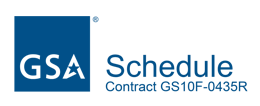Selecting Your Team
By Michael Wilkinson, CMF
Managing Director, Leadership Strategies, Inc.
So, you’ve been named to head up the task force to fix the organization’s hiring process. You may be internal to the organization or an external consultant called in to lead the effort. You’ve met with the sponsor and have identified the project’s purpose and product. You have developed the work process, the timeline and the budget. It’s now time to select your four team members. But there are issues:
- You know there are probably some key individual characteristics each team member should have. But you’re not sure what they are.
- You know the two people you have to have. They are both “get-it-done” type people. One is very knowledgeable in HR issues. The other is superb at analyzing processes and developing practical solutions that are faster, better, and cheaper. But how are you going to get their managers to free them up?
- And even if you are successful with getting these two, you still have two other slots to fill. How do you balance out the team? What are the collective skills you need to have? How do you make sure you get them?
Often times, you don’t get the luxury of selecting team members, or even influencing the selection process. The team is selected for you and you have to take what you get. Unfortunately, managers might give you the “available people” – the ones who aren’t too busy, have limited awareness of the issue and a very limited stake in the outcome. They are available, so they are put on your team!
The problem, of course, with “available people” is that they often are unable to arrive at anything better than “available” solutions. These solutions are typically not too creative, fairly incremental in their benefit, but “available” to be implemented right away.
Getting the Best
We try to be as proactive as possible in influencing the team composition. Depending on the project, we typically use words such as the following to gain the commitment of the leadership team to staff the project with top contributors.
“This is clearly a strategic initiative for the organization. If we can get the right minds on this and if we do this right, we will be able to create something that drives the organization’s success even further by… (This is where you fill in the appropriate benefit statement!) However, the last time I looked, there very few people sitting around with nothing to do. But if you give us your people who happen to be available, we will likely come up with solutions that “happen to be available” – the solutions might address the need, but they probably won’t knock your socks off. But for this effort to be highly successful, we are going to need the people who really know the issue and the people who can develop creative solutions and get them implemented. Of course these people are already very busy. But if there is a way that those who are less over-committed can off-load these key people, it would go far in setting us up for success and would certainly demonstrate senior management’s commitment to making this initiative happen.”
While words such as these don’t guarantee you will get the best people, they can help you gain a stronger team.
Individual Characteristics
What are the traits that you should seek in each team member? In Chapter 3 of the The Secrets of Facilitation, you’ll find the following recommendation:
All participants should. . .
- Understand the issue under study
- Have a stake in the outcome
- Be empowered to make decisions or recommendations
- Be perceived as opinion leaders by peers
- Be open to solutions other than their own
What happens when a team member doesn’t have each of these traits?
|
When a team member doesn’t… |
The result can be… |
|
Understand the issue under study, |
Time wasted during the session educating the team member; or worse, the team member doesn’t participate because he feels he doesn’t know what others know. |
|
Have a stake in the outcome, |
The team member doesn’t participate due to lack of interest; or worse, the team member distracts the team with topics of personal interest unrelated to the team’s work. |
|
Be empowered to make decisions or recommendations, |
The team member records notes to take back to decision makers, but doesn’t offer opinions. |
|
Be perceived as opinion leaders by peers |
The team member is unable to influence associates who are not on the team. |
|
Be open to solutions other than their own |
The team member takes a “my way or the highway” attitude; time is wasted arguing positions rather than seeking creative solutions or common ground. |
Collective Traits
Just as each member should have some common characteristics, as a team, your members should be representative of the organization and collectively should bring core knowledge to the table. You will find these additional recommendations in The Secrets of Facilitation.
As a group, depending upon the session, the participants should…
- Represent diverse communication styles: direct/indirect, task-oriented/people-oriented, high-level creative/detailed procedural
- Be knowledgeable of all relevant activities under study
- Be cross-functional and representative of all groups with a major stake in the outcome
- Be drawn from various levels within the organization structure (for example, managers, supervisors and workers)
With a strong team selected, you are ahead of the game in achieving your desired results.
You can learn more consulting tips in our class, The Facilitative Consultant. Click here for more information.
Michael Wilkinson is the Managing Director of Leadership Strategies – The Facilitation Company and author of The Facilitative Consultant training course.Prior to Leadership Strategies, he spent eight years with Ernst & Young’s Management Consulting Group. He recently publishedThe Secrets of Facilitation, and is a much sought after trainer, facilitator and speaker.

